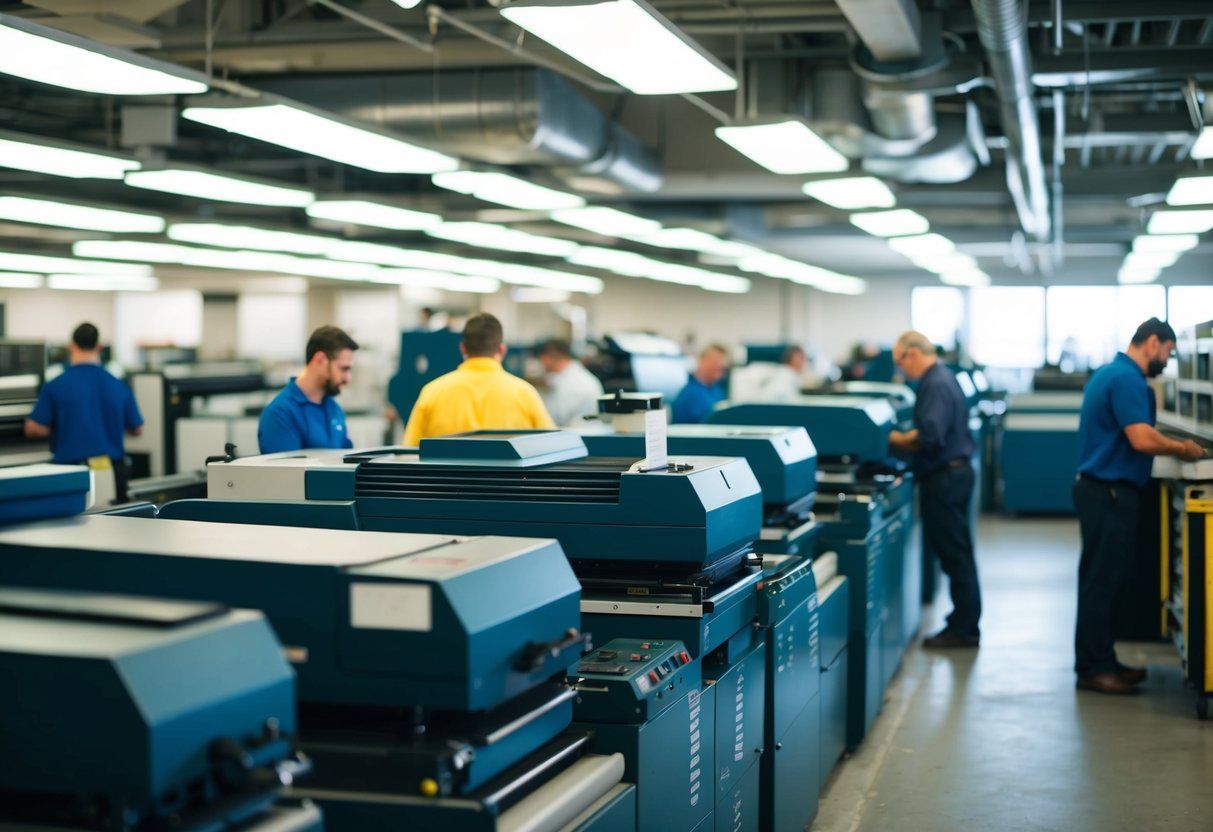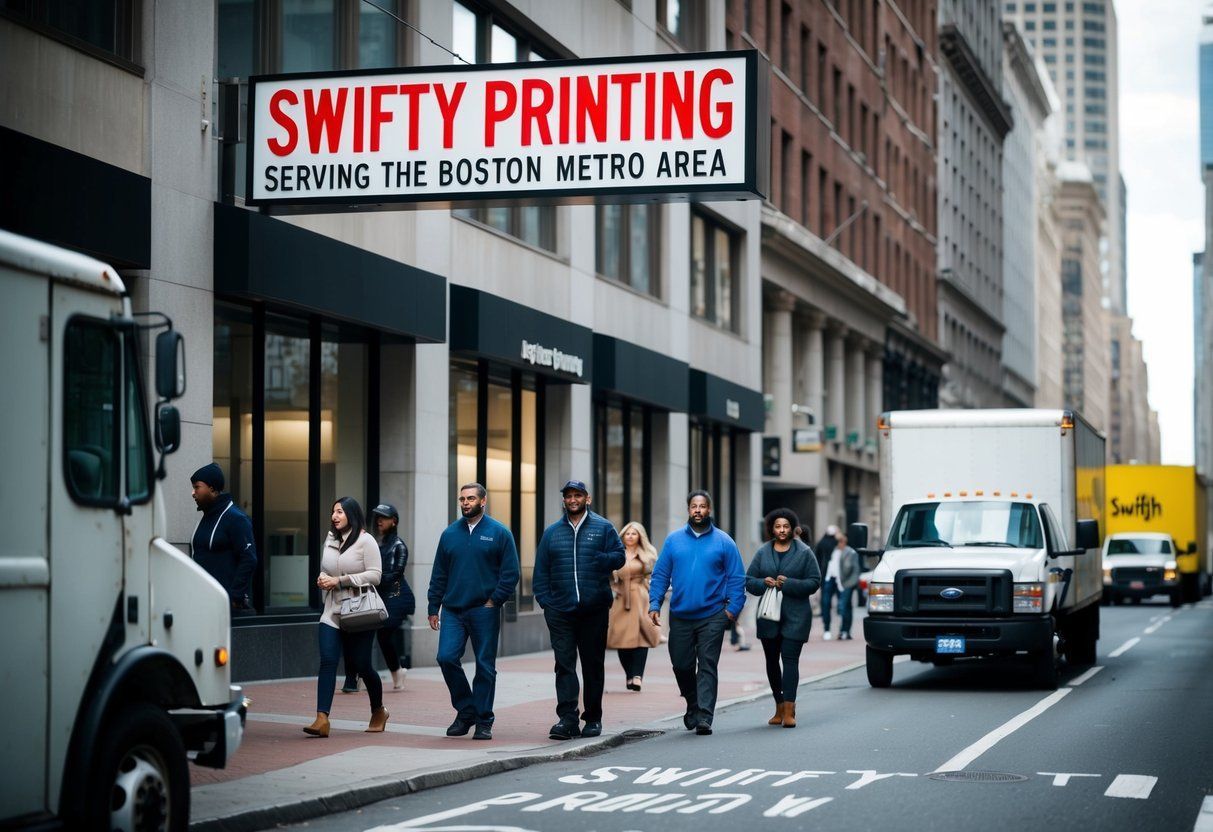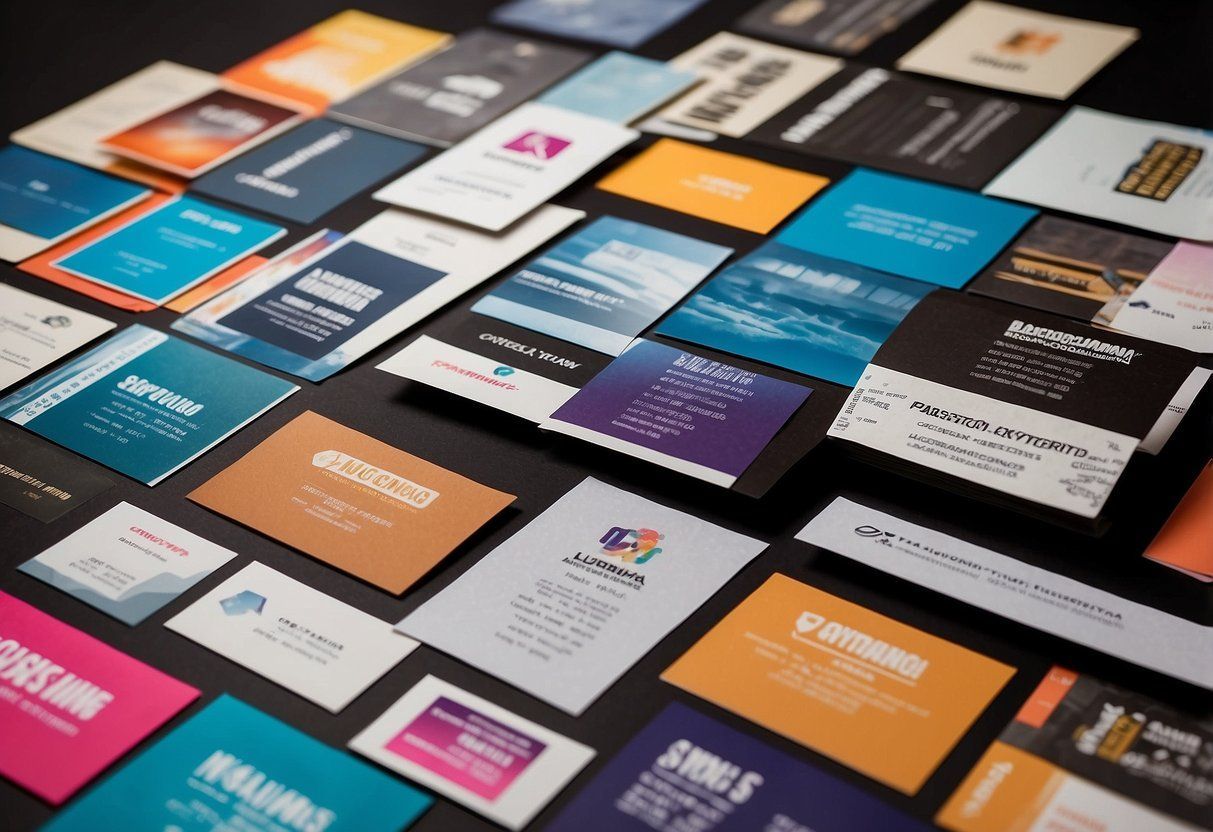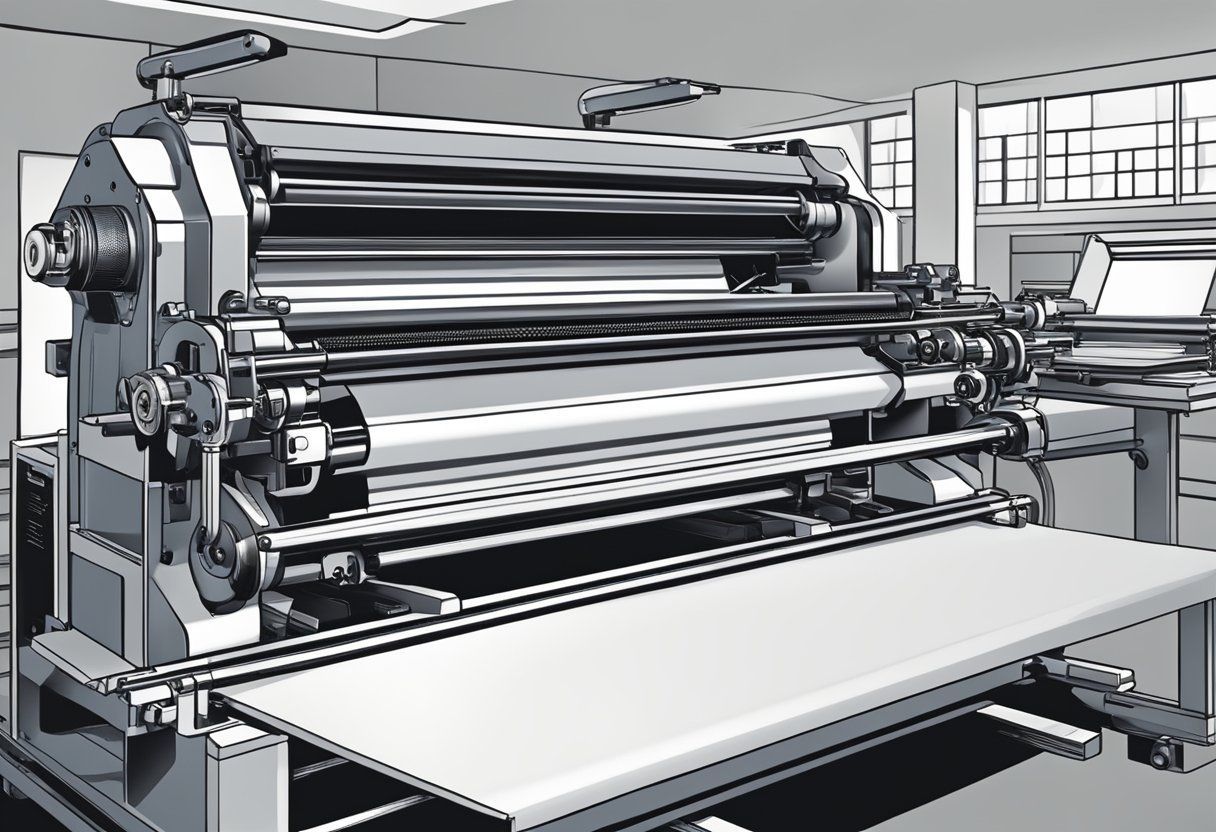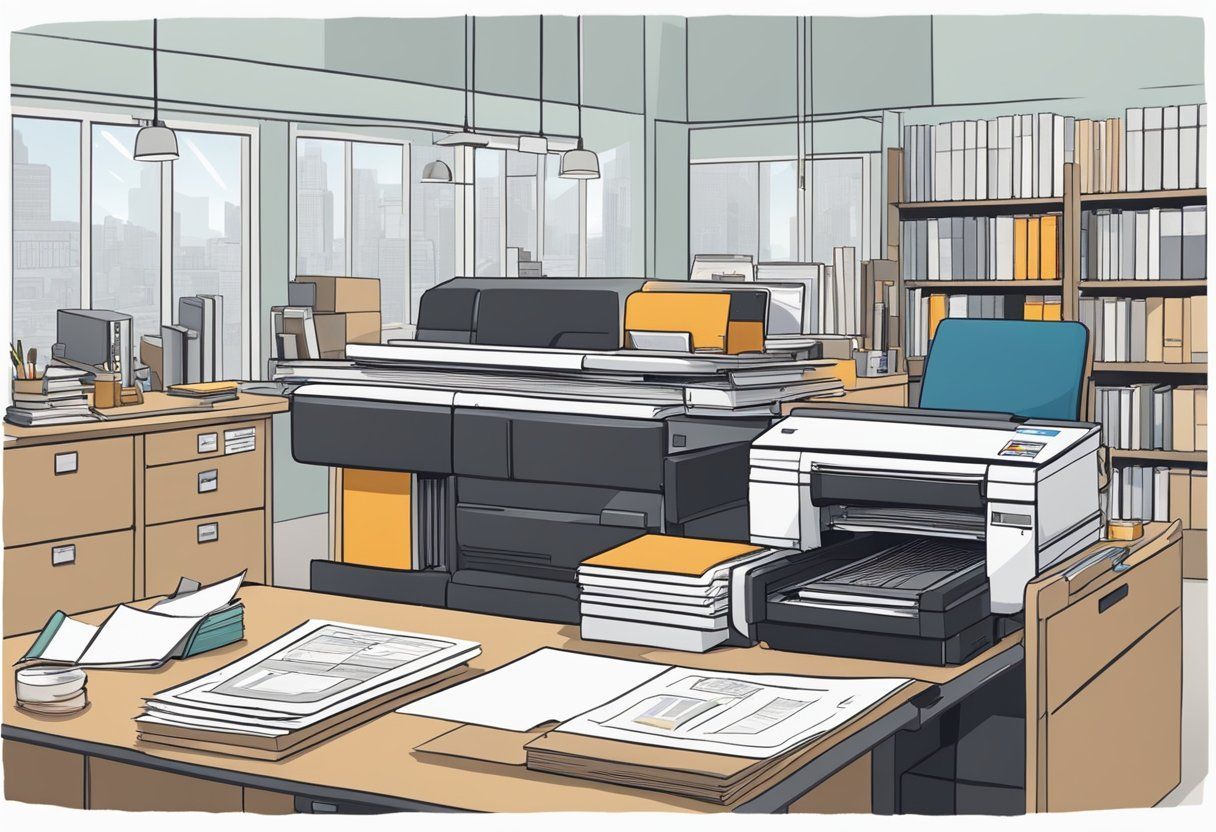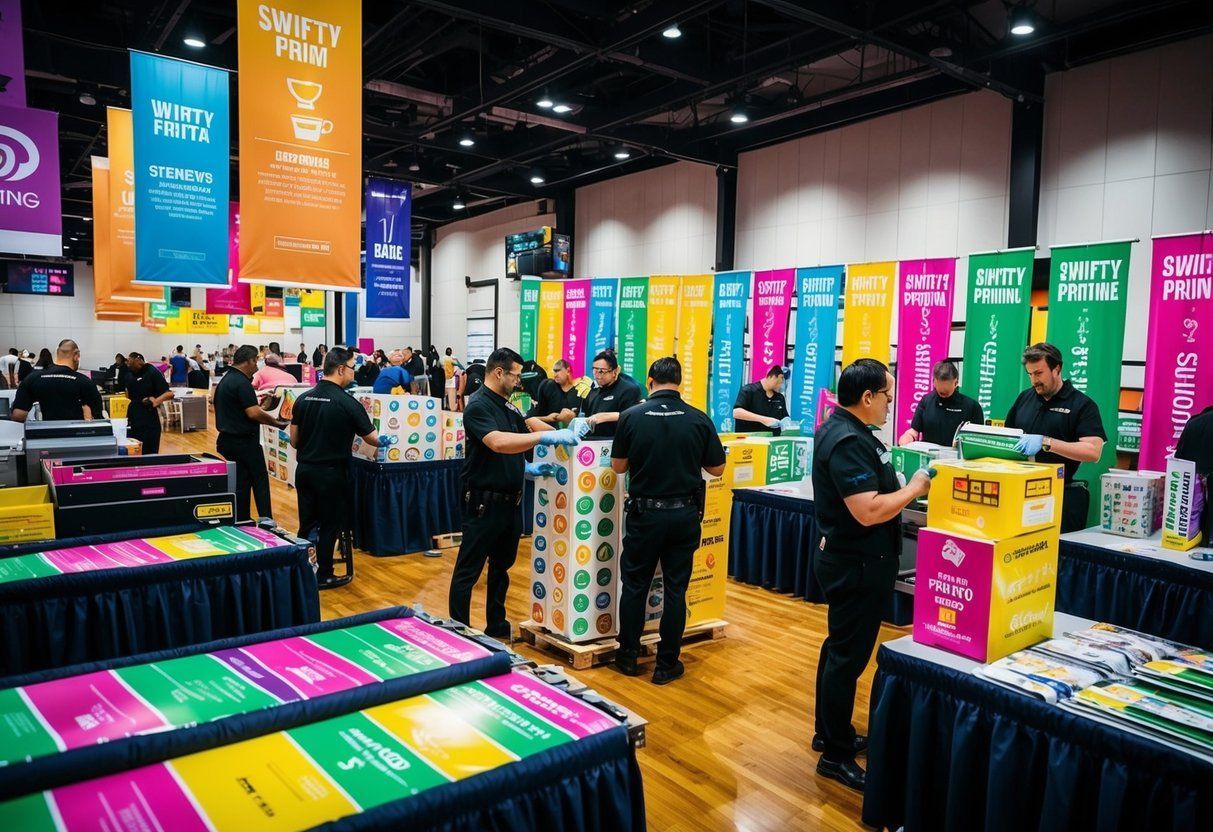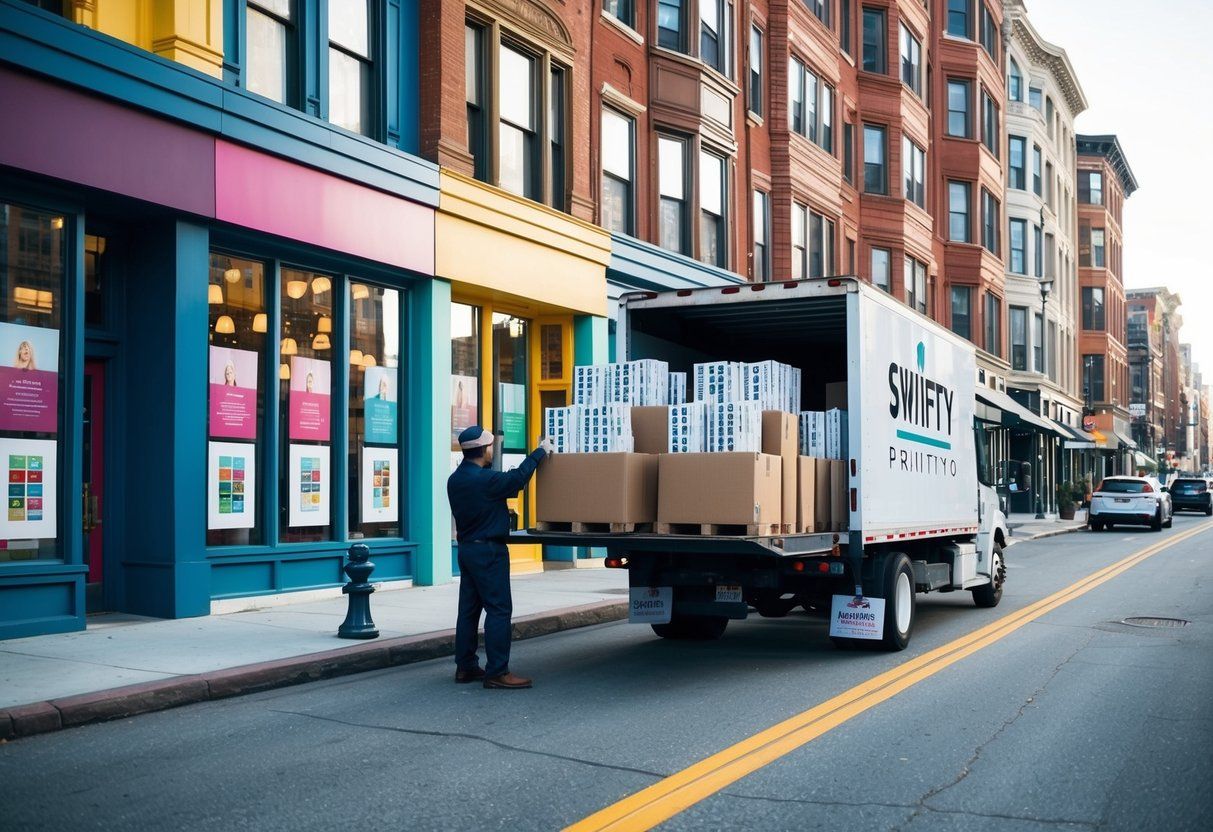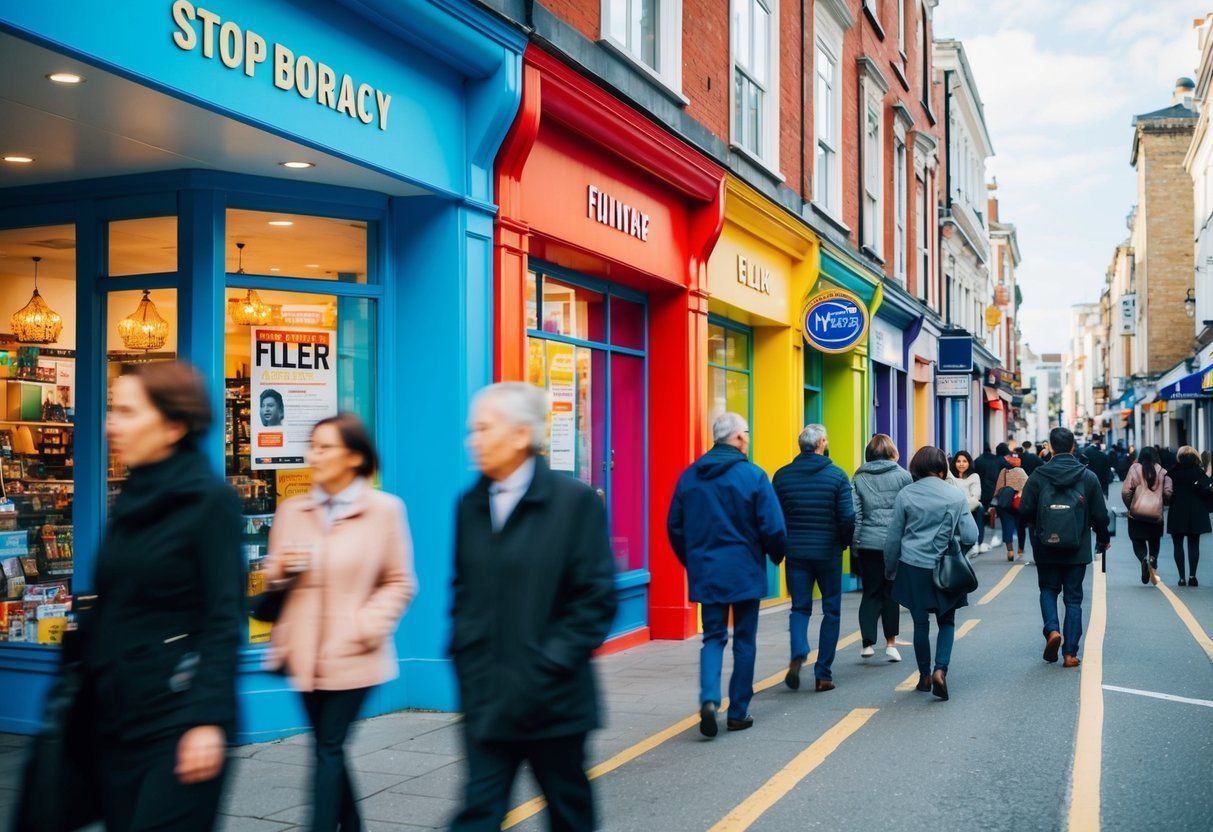How to Choose the Right Paper for Your Poster: Essential Tips for a Professional Look
Choosing the right paper for a poster is essential for achieving the desired impact and effectiveness. The right paper can enhance the visual appeal and ensure that the message resonates with the audience. With various types, sizes, and finishes available, making an informed choice can seem overwhelming.
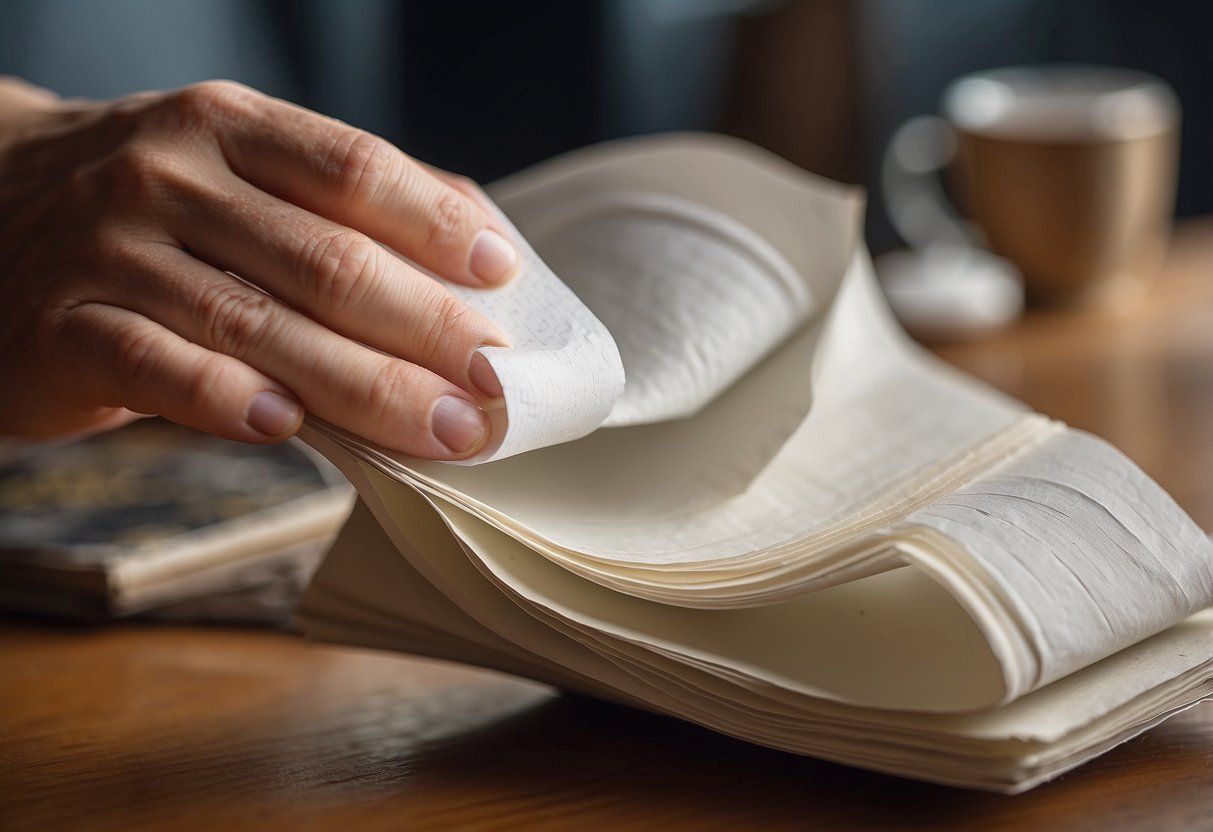
Each element of the poster, from its purpose to its content, plays a significant role in determining the best paper option. The right material not only supports the design but also aligns with the budget and production needs. Understanding these factors helps in maximizing the poster’s potential, whether for marketing, educational purposes, or personal use.
As the design process begins, considering the overall look and feel of the poster will guide the selection of paper. Knowing where and how the poster will be displayed further influences these decisions. This careful planning can lead to a successful final product that effectively communicates its intended message.
Key Takeaways
- Selecting the proper paper material boosts the overall impact of the poster.
- The appropriate size and weight enhance both visibility and quality.
- Understanding the finish and texture can elevate the poster’s design.
Understanding Poster Purposes
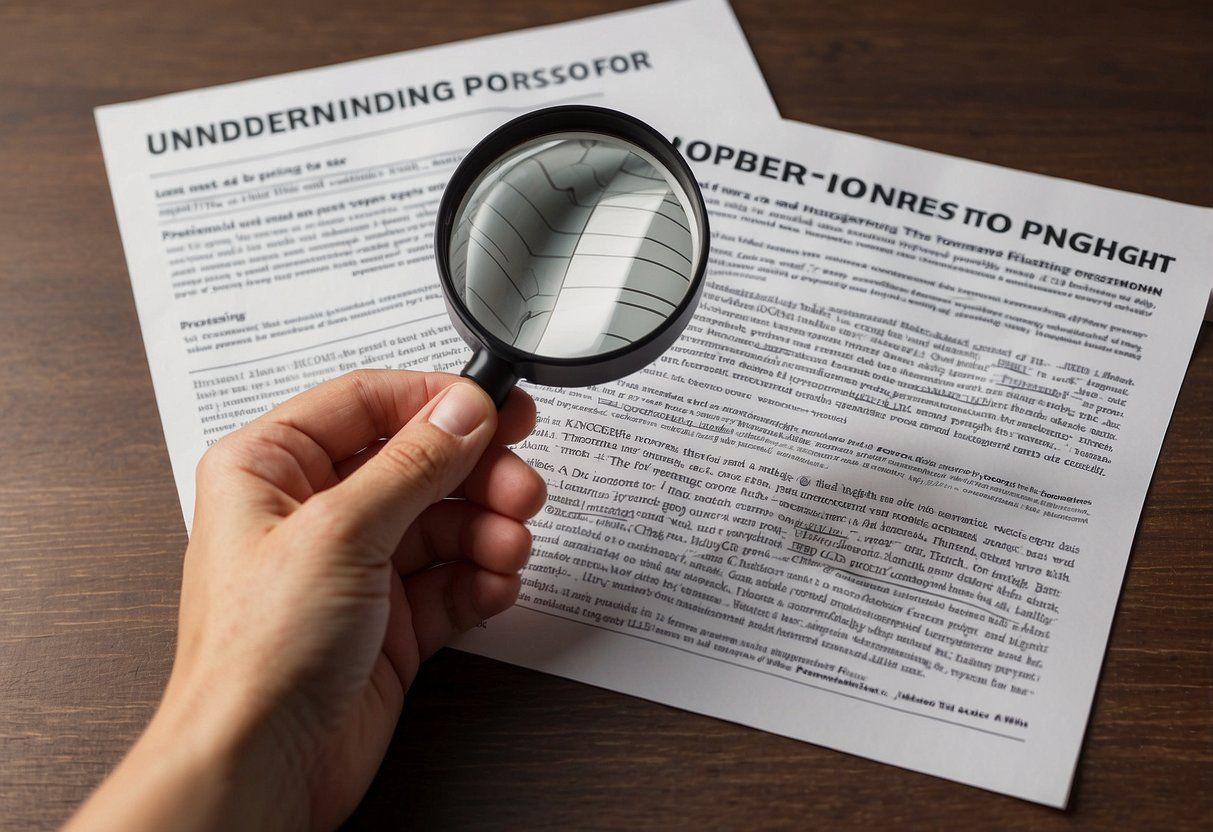
Choosing the right paper for a poster involves considering its intended purpose. Various factors influence the design and material type, including the poster’s location, duration of use, and specific event context.
Indoor vs. Outdoor Posters
Indoor posters are typically used in controlled environments. They may need lighter paper, making options like 90-120 gsm suitable. This weight is economical for short-term displays or temporary promotions.
Outdoor posters face exposure to weather. Materials like vinyl or heavier paper with a weight of 200-300 gsm offer durability against elements like rain and sunlight. They are often designed for longer display periods, requiring stronger inks and water-resistant options to maintain visibility.
Long-Term vs. Short-Term Display
Short-term posters, such as those used for campaigns or events, can be printed on lighter weight paper. They are often intended for quick use and do not require high durability.
In contrast, long-term posters are meant for extended display periods. Heavier paper, typically 200-300 gsm, is recommended. This ensures they withstand wear and tear over time. Long-term displays often feature vibrant graphics and high-quality prints, which attract attention and convey professionalism.
Trade Show Banners and Promotional Posters
Trade show posters serve to attract potential clients and provide information. They often need to be lightweight for easy transportation. Most trade show markers require bold colors and clear text to stand out in busy environments.
Promotional posters , while similar, often include specific campaign details. This means they may use sturdy card stock for a polished look. They should also match the campaign’s overall theme, ensuring brand consistency.
Movie Posters and Artwork
Movie posters are a unique category, focusing heavily on design and impact. These posters typically use high-quality paper to achieve rich colors and sharp details. A lightweight finish is often sufficient since they are displayed indoors, such as in theaters and on promotional walls.
Artwork posters also prioritize aesthetics. Artists may choose fine art paper for its texture and durability. A heavier weight gives artwork a more professional feel, while vibrant colors bring the design to life.
When selecting paper, one must consider the specific requirements of each poster type.
Selecting the Right Paper Material
Choosing the right paper material is essential for making an impactful poster. Different types of paper serve various needs based on their characteristics, durability, and longevity. This section provides clear insights into the types of paper available and factors to consider.
Understanding Different Paper Types
When selecting paper for a poster, it is important to know the characteristics of each type. Coated papers have a smooth surface that enhances color vibrancy and print quality. They are ideal for posters displaying images or graphics.
Uncoated papers , on the other hand, offer a more natural feel and texture. They tend to absorb ink differently, providing a softer look. This type may be better for text-heavy designs.
Additional material options include vinyl , which is waterproof and durable, making it suitable for outdoor displays. Canvas and fabric add a unique texture but may require special printing techniques. Metal can also be used for a modern and sleek look. Each material affects the visual presentation and effectiveness of the poster.
Comparative Analysis: Coated vs. Uncoated Paper
Coated and uncoated paper each have distinct advantages. Coated paper features a shiny finish that enhances clarity and color saturation. This makes it ideal for high-resolution images and designs where bright colors are key.
Conversely, uncoated paper offers breathability, allowing the ink to absorb in a way that gives a softer and more subdued appearance. This can be advantageous for designs focusing on typography over imagery.
Cost is another factor to consider; coated paper may be more expensive due to its specialized treatment. Uncoated paper is often more cost-effective without sacrificing quality for text-heavy designs. Understanding these differences helps in selecting the right paper type based on the desired visual effect.
Evaluating Durability and Longevity
Durability and longevity are critical when choosing paper for a poster. Coated paper is generally more resistant to wear, tear, and moisture. This characteristic makes it suitable for long-term displays.
In contrast, uncoated papers may be more prone to damage from water and less able to withstand environmental changes. However, certain treated uncoated papers can improve their durability.
For outdoor use, materials like vinyl are highly durable and weather-resistant. They are perfect for posters that need to last a long time outdoors. Additionally, creative choices like canvas and fabric offer a different longevity profile, often lasting longer than traditional paper if properly cared for.
Metal options, though more expensive, provide excellent durability and a unique aesthetic. Each option presents different benefits in terms of durability and suitability for specific environments.
Determining Appropriate Paper Size and Weight
Choosing the right paper size and weight is crucial for a successful poster. It affects the design, visibility, and budget. Understanding the available options helps in making an informed decision.
Standard Poster Sizes and Custom Dimensions
Posters come in standard sizes, which makes printing easier and often more cost-effective. Common dimensions include:
- 11″ x 17″ (Tabloid)
- 18″ x 24″ (Small)
- 24″ x 36″ (Medium)
- 36″ x 48″ (Large)
These sizes suit various purposes, from events to promotional materials. Custom dimensions are also an option, especially when unique displays are necessary.
When choosing dimensions, consider where the poster will be displayed. A larger size increases visibility from a distance, while smaller formats fit better in tight spots. Adjusting the width or height can also optimize space, ensuring the poster stands out without blocking important information.
Paper Weight and Thickness Guide
Paper weight is measured in pounds (lbs) or grams per square meter (gsm). The most common weights for posters include:
- 100 lb (270 gsm) – Suitable for durability
- 80 lb (215 gsm) – Common for flyers and smaller posters
- 12 pt cardstock – Good for thick, sturdy options
Using the right thickness is essential. Thicker paper provides a more professional look and feels substantial. This is important for displaying posters in high-traffic areas.
For large posters, lightweight paper may be less expensive but could lack durability. Weighing the options ensures the chosen paper meets both aesthetic and functional needs.
Impact of Size and Weight on Budget
The size and weight of the paper significantly influence the overall budget. Standard sizes typically reduce printing costs. While custom sizes are appealing, they often come with higher expenses due to additional setup and processing.
Lighter weights are usually cheaper. However, compromising on quality for a lower cost may result in poor presentation.
It’s vital to balance budget needs with the project’s requirements. Setting a clear budget beforehand can streamline decision-making and prevent overspending. Consider long-term use and replacement costs to ensure the best investment in poster production.
Choosing the Ideal Finish and Texture
Selecting the right finish and texture for a poster significantly impacts its overall look and feel. Different options cater to various aesthetic preferences and practical needs. Careful consideration of matte versus glossy finishes, special coatings, and texture types is essential for achieving the desired effect.
Matte vs. Glossy: Pros and Cons
A matte finish has a non-reflective surface. It allows for a more muted look, making colors appear softer. This type helps reduce glare, making it ideal for framing and viewing in bright areas. Professional photographers often prefer it for displayed works. However, matte finishes may not be as vibrant as glossy ones.
On the other hand, a glossy finish provides a shiny and polished appearance. It tends to make colors pop and can enhance detail, catching the eye. Posters with a glossy finish are often used for advertising or high-impact visuals. The downside is that they can reflect light and attract fingerprints, which may affect viewing.
Special Coatings: Matte, Gloss, and UV
Coatings can help protect posters and improve their finish. A matte coating enhances the non-reflective quality while safeguarding against smudges and scratches. This coating is perfect for posters that will be handled frequently or displayed in busy places.
Gloss coatings offer a shiny, vibrant effect while also providing some level of protection. They increase durability against fading and moisture. Additionally, a UV coating can be added for extra protection against harmful sunlight, prolonging the life of the print. This option is particularly useful for posters displayed outdoors or in sunny areas.
Texture Options: Fabric, Canvas, and More
Texture plays a vital role in the tactile experience of a poster. Fabric poster options provide a soft feel and can add depth to the design. This material is suitable for art prints and decorative displays.
Canvas offers a more artistic, classic appearance, mimicking gallery-quality art pieces. It is durable and can withstand wear, making it suitable for longer-term displays.
For a unique touch, consider textured papers that can add dimension. These options can enhance visuals with patterns or finishes that create interest and elevate the overall presentation.
Printing Techniques and Color Considerations
Choosing the right printing techniques and understanding color considerations play a significant role in producing high-quality posters. Selecting the right printer and managing color accurately enhances the visual impact and clarity of the final product.
Selecting a Printer for High-Quality Output
When choosing a printer for poster printing, it is crucial to consider the printer’s capabilities. A large format printer is often preferred for posters, as it can handle larger sizes and produce high-quality output .
Printers vary by quality, with inkjet printers generally offering better color vibrancy compared to laser printers. Inkjet models can deliver richer and more detailed graphics due to their finer ink droplets.
Always review the printer’s specifications. Look for features like resolution (measured in DPI) and the types of ink used. This will help ensure that the chosen printer meets the quality expectations for the poster.
Color Management for Vibrant Posters
Effective color management is essential for achieving vibrant colors in printed posters. Proper techniques ensure that the colors seen on a screen translate accurately to the printed medium.
Using the RGB (red, green, blue) color space for designs is common, but it often needs converting to CMYK (cyan, magenta, yellow, key/black) for printing. This conversion is crucial since printers use CMYK ink, affecting the final output.
Before printing, a color proof is advisable. This sample shows how the colors will look once printed, allowing for adjustments. Color calibration of the printer can also enhance consistency, ensuring that colors remain true across different print runs.
Ink Types and Printing Processes
Different types of ink can significantly influence the outcome of poster printing. Dye-based inks offer vibrant colors but may fade over time, while pigment-based inks provide better longevity and durability against UV light.
Understanding the printing process is equally important. Common techniques for poster printing include digital printing and offset printing. Digital printing is suitable for small runs and allows for quick turnaround times. In contrast, offset printing excels in large-volume jobs, providing better color accuracy and consistency.
Selecting the right ink type and printing process will directly affect both image quality and poster longevity. Make informed choices based on the intended use of the poster to achieve the best results.
Visual and Textual Content Strategy

Creating effective visual and textual content is crucial for any poster. A well-planned strategy enhances communication and engages viewers. This section covers balancing text and images, understanding file size and resolution, and crafting a minimalist design.
Balancing Text and Images for Impactful Design
A strong poster design requires a balance between text and images. Too much text can overwhelm the viewer, while too many images can distract from the message. It is essential to keep text concise and impactful.
- Use bullet points to summarize key ideas.
- Limit font styles to two or three for clarity and consistency.
Images should support the text. They can illustrate ideas or add emotional appeal. Choosing a main image helps create a focal point, guiding the viewer’s attention.
Image Resolution and File Size Essentials
Image quality is vital for a professional-looking poster. High-resolution images , ideally 300 DPI (dots per inch), ensure clarity and detail. Low-resolution images can appear blurry or pixelated in print.
File size also plays a critical role. Large images might slow down processing in design software. Striking a balance between quality and size is essential.
- Aim for images that are large enough for print but optimized for digital use.
- Save files in appropriate formats like JPEG or PNG for balance between quality and size.
Crafting a Minimalist Design with Maximum Effect
Minimalist design emphasizes simplicity and clarity. It allows for effective communication of ideas without unnecessary clutter. This approach can make a poster stand out and quickly convey its message.
- Choose a limited color palette to create harmony.
- Incorporate ample white space to enhance readability.
Each element should serve a purpose. Unnecessary graphics or excessive text can dilute the message. By focusing on essentials, the poster can maintain viewers’ attention while delivering a strong impact.
Additional Enhancements and Features
Choosing the right paper is just the start. Enhancements and additional features can elevate a poster’s effectiveness and appearance. Consider options like lamination, unique materials, and innovative printing techniques to create a striking visual impact.
Lamination and Protective Coatings
Laminating a poster provides a durable finish that protects against wear, fading, and moisture. It adds a glossy or matte look, enhancing colors. This is useful for posters displayed outdoors or in high-traffic areas.
Lamination can increase the lifespan of a poster, making it an ideal choice for events that last for days. The cost of lamination varies, but it is usually a small investment compared to the benefits of protecting important visuals. Many print shops offer this service, making it accessible for all.
Utilizing Foam Core, Glass, and Metal
Foam core boards are lightweight yet sturdy, making them great for backing posters. They provide structure while remaining easy to hang or display.
Glass and metal frames can offer a polished look for posters. Glass protects against dust and damage, while metal frames add modernity. These materials can be more expensive, but they are excellent for long-term displays or professional environments.
Using different substrates for mounting can also enhance the visual appeal of posters. Choosing the right backing can drastically change how the poster is perceived by the audience.
Innovative Printing Options: Wood, Metallic, and More
Printing on unique materials like wood or metallic surfaces adds an artistic touch. Wood can create a rustic feel, while metallic finishes can make colors pop and create eye-catching reflections.
These printing options can be more costly but provide a one-of-a-kind look. They are suitable for specialized projects where standard paper just won’t do.
Many print services now offer these innovative choices, making it easier for individuals to experiment with different materials. Each option can significantly impact the final presentation and effectiveness of the promotional message.
Practical Tips for Poster Placement

Choosing the right location for a poster is essential for attracting attention and conveying the intended message. Factors such as visibility, legal considerations, and protection from environmental damage should guide the placement strategy.
Selecting Ideal Locations for Maximum Visibility
When placing a poster, selecting locations with high foot traffic is key. Areas such as bus stops, storefronts, and community boards are effective spots.
He or she should consider the size and aspect ratio of the poster as well. A larger poster may work well on a wide wall, while smaller ones fit better in cramped spaces.
Visual elements can enhance visibility, too. Colors should contrast with the background to stand out. Additionally, he or she might think about the time of day when people frequent the area, as lighting can affect how well a poster is seen.
Legal Considerations for Outdoor Placement
Before putting up posters outdoors, it is crucial to check local laws and regulations. Many cities have specific guidelines on advertising in public spaces, including where posters can be placed.
He or she must avoid placing posters on private property without permission. Violating these laws can lead to fines or removal of the poster.
Knowing whether to use removable adhesive or specific paper for poster can also help. Some materials may damage surfaces or leave residue, leading to disputes.
Protecting Posters from Environmental Factors
Posters placed outdoors face weather challenges like rain and sunlight. Using appropriate poster paper can enhance durability. Glossy finishes might resist moisture better than matte options.
He or she should consider protective lamination for longevity. Laminated posters can withstand harsh conditions while retaining vibrant colors.
Placement is also important. Avoid exposing posters to direct sunlight for extended periods, as this can cause fading. Sheltered locations or overhangs are useful in providing some form of protection against the elements.
Cost Management and Budgeting for Poster Production

When managing costs for poster production, it’s essential to establish a clear budget. This budget should include all potential expenses to avoid surprises.
Key Factors Influencing Cost:
- Paper Type: The choice of paper significantly affects the price. Higher-quality paper, like heavy gloss or premium matte, often costs more.
- Size: Standard sizes, such as A2 or A3, can often save money compared to custom sizes.
- Printing Shop: Different printing shops may have varying rates. It’s wise to compare prices and services offered.
Tips for Cost-Saving:
- Select Paper Wisely : Discuss options with the printing shop to find a good balance between quality and price. Using paper around 170gsm may be a cost-effective choice.
- Optimize Design: Keep the design simple to avoid high ink costs. Limit the number of colors to keep printing expenses down.
- Bulk Printing: If needing multiple copies, printing in bulk can reduce the per-unit cost.
By being mindful of these factors, individuals can effectively manage their budget and ensure that their poster production is both affordable and high-quality.
Frequently Asked Questions

Choosing the right paper for a poster involves understanding various factors that affect quality and impact. The following questions address key aspects to consider, from paper weight to finishes.
What factors should be considered when selecting paper for poster printing?
When selecting paper for poster printing, it’s important to consider durability, color vibrancy, and intended use. Heavier papers tend to be more durable but can also affect the final look. The environment where the poster will be displayed should also be taken into account.
Which paper weight is most suitable for producing high-quality posters?
For high-quality posters, a weight between 170 gsm and 300 gsm is often recommended. Heavier paper provides a more professional feel and enhances color saturation. It is also less likely to curl or warp when displayed.
What type of paper finish is recommended for a professional poster appearance?
A glossy finish is recommended for posters with vibrant images, as it enhances colors and makes them pop. On the other hand, a matte finish can provide a more sophisticated look and allows for better readability of text.
How does paper size and orientation impact the effectiveness of a poster?
The size and orientation of a poster can significantly impact its visibility and effectiveness. Larger posters tend to attract more attention, while vertical or horizontal layouts can dictate how information is presented and perceived by the viewer.
What are the benefits of using coated versus uncoated paper for poster projects?
Coated paper typically offers better color reproduction and is more resistant to smudges and fingerprints. Uncoated paper provides a more natural feel and is often preferred for posters that include a lot of text. The choice depends on the poster’s purpose and design.
How can one decide between different paper materials for school project posters?
When choosing paper materials for school project posters, consider the project’s budget and the desired visual impact. Options like bond paper are usually cost-effective, while cardstock offers a sturdier option. The choice should reflect both the project’s goals and the audience.…
